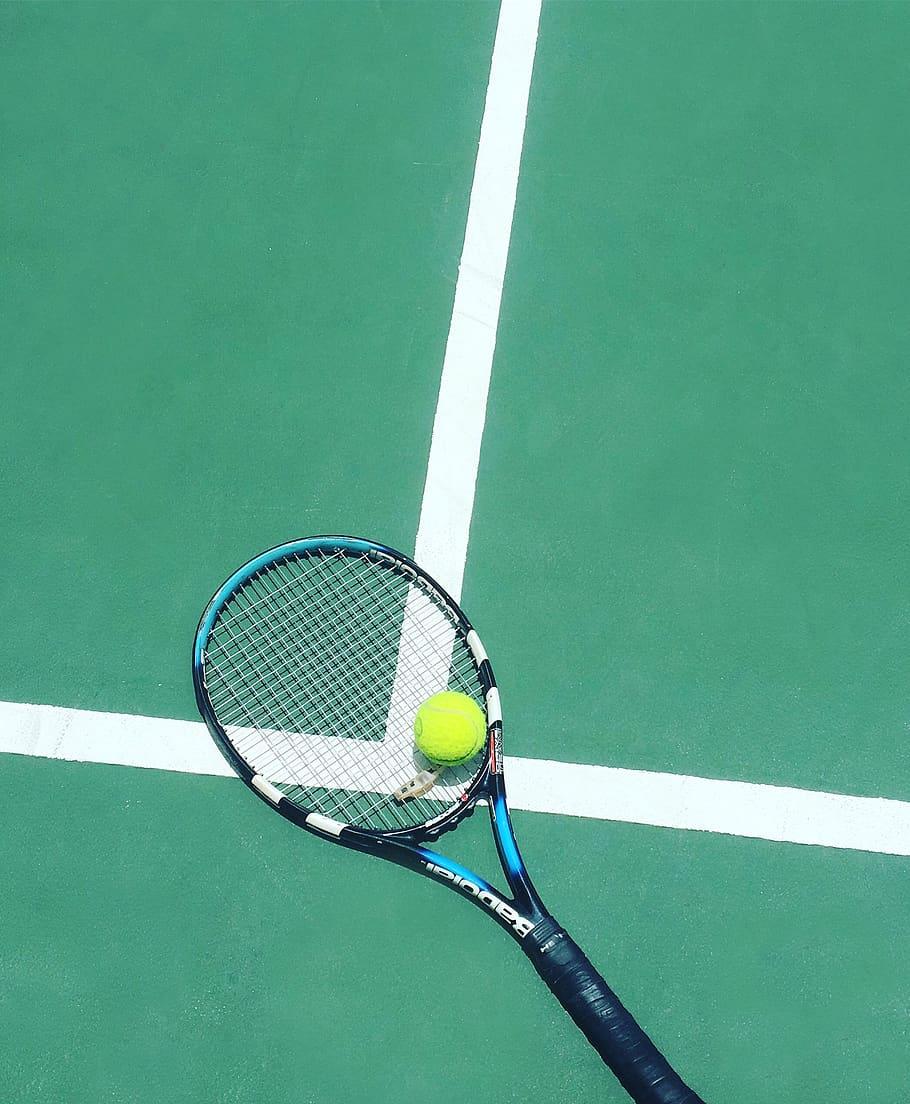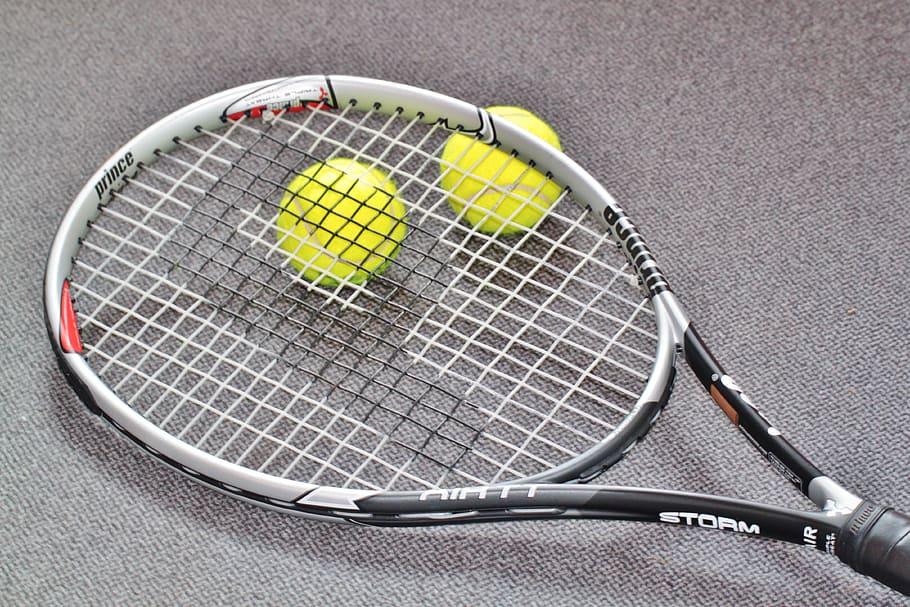We may earn money or products from the companies mentioned in this post.
Introduction to Choosing a Tennis Racket

When it comes to playing tennis, selecting the right racket is not just a matter of preference, but also crucial for your overall performance on the court The perfect racket can enhance your skill level and take your game to new heights, while also minimizing the risk of injury
The Importance of Selecting the Right Tennis Racket
1 Enhancing Performance and Skill Level:
A tennis racket that suits your playing style and abilities can significantly improve your performance on the court Whether you’re a power player who relies on strong strokes or a finesse player with precise shots, choosing a racket specifically designed for your style will enable you to maximize your strengths and optimize your game strategy
2 Minimizing Injury Risk:
Using an ill-fitting or inappropriate tennis racket can increase the risk of injuries such as wrist strains, elbow pain, or shoulder issues When you choose a racket that is well-suited to your physical attributes and playing style, it promotes proper technique and reduces unnecessary strain on your body
Factors to Consider When Choosing a Tennis Racket
-
Type of Player:
Consider whether you are an aggressive baseline player, an all-court player, or someone who prefers net play Different types of players require different features in their rackets to optimize their gameplay -
Racket Head Size:
The head size directly influences power and control Larger heads provide more power but may sacrifice control, while smaller heads offer better precision at the expense of power -
Racket Weight:
Lighter rackets are easier to maneuver and generate faster swings but might lack stability during powerful shots Heavier rackets offer more stability and power but can be harder to handle -
Racket Balance:
The balance point affects how the weight is distributed in the racket Head-heavy rackets provide more power, while head-light rackets offer better maneuverability -
Grip Size:
Choosing the correct grip size ensures a comfortable hold on the racket, minimizing the risk of hand and wrist injuries An improper grip size can lead to discomfort and affect your overall performance
By considering these factors and finding the right balance between power, control, maneuverability, and comfort, you can select a tennis racket that perfectly suits your needs and playing style Remember to try out different options before making a decision, as what works for one player may not work for another Ultimately, choosing the right tennis racket is an investment in your game and enjoyment of this dynamic sport
Understanding Tennis Racket Specifications

Tennis racket specifications can greatly impact your performance on the court By understanding the different aspects of a racket, you can make an informed decision when choosing the right one for your playing style Let’s dive into the key specifications and their effects
Racket Head Size
The head size of a tennis racket refers to the size of its hitting surface Rackets come in three main head sizes: midsize, mid-plus, and oversize Each size offers unique characteristics that affect power, control, and sweet spot
1
Midsize:
Midsize rackets have smaller heads ranging from 85 to 95 square inches These rackets provide more control but require precise shots to generate power
2
Mid-plus:
Mid-plus rackets have slightly larger heads between 95 and 105 square inches They strike a balance between control and power, making them popular among intermediate players
3
Oversize:
Oversize rackets have the largest heads measuring over 105 square inches They offer generous sweet spots, providing more forgiveness on off-center hits and generating more power
Racket Length
The length of a tennis racket can impact your reach, power, and maneuverability on the court
1
Standard length:
Standard length rackets are typically around 27 inches long They offer good maneuverability and control for most players
2
Extended length:
Extended length rackets are longer than standard ones, usually around 28 inches or more The extra length provides increased reach and leverage for added power but may sacrifice some maneuverability
Weight Distribution
The weight distribution of a tennis racket, whether it’s head-heavy or head-light, can significantly affect your game
1
Head-heavy:
Head-heavy rackets have more weight towards the head This weight distribution enhances stability and power generation, making them suitable for players who rely on strong groundstrokes and volleys
2
Head-light:
Head-light rackets have more weight towards the handle They offer greater maneuverability, allowing players to swing faster and generate spin easily These rackets are preferred by players who value control and agility
Racket Frame Stiffness
The stiffness of a tennis racket’s frame plays a crucial role in power transfer and shock absorption during ball impact
1
Stiff frames:
Stiff frames provide better energy transfer from the racket to the ball, resulting in increased power potential However, they may transmit more vibrations to your arm, potentially leading to discomfort or injury if not properly managed
2
Flexible frames:
Flexible frames absorb more of the ball’s impact energy, reducing vibration and providing a softer feel on contact They offer improved comfort but may sacrifice some power compared to stiffer options
In conclusion,
- Racket head size affects power, control, and sweet spot
- Racket length influences reach, power, and maneuverability
- Racket weight distribution impacts stability, power generation, and swing speed
- Racket frame stiffness determines power transfer and shock absorption levels
Knowing Your Playing Style and Skill Level

When it comes to playing tennis, understanding your own playing style and skill level is crucial By identifying your strengths and weaknesses on the court, you can tailor your training and gameplay to maximize your potential Let’s dive into the two key aspects of knowing your playing style and skill level
Identifying Your Playing Style
1 Baseline Players: Are you someone who thrives on power or control? Baseline players are known for their strong groundstrokes from the back of the court If you enjoy hitting powerful shots or prefer a more controlled approach, then you likely fall into this category
2 Serve-and-Volley Players: Do you love rushing to the net after a serve? Serve-and-volley players rely on their strong serves and quick movements to dominate points at the net If you find yourself constantly looking for opportunities to attack at the net, then this may be your preferred style
3 All-Court Players: Are you versatile in your game, comfortable both at the baseline and near the net? All-court players possess a well-rounded game that allows them to adapt to different situations on the court They have solid groundstrokes as well as good volleying skills
Assessing Your Skill Level
1 Beginner/Recreational Players: If you’re new to tennis or play recreationally without any formal training, then consider yourself a beginner or recreational player At this stage, focus on building fundamental skills such as grip technique, footwork, and basic shot execution
2 Intermediate Players: Once you’ve developed a solid foundation of skills and have some experience under your belt, you can consider yourself an intermediate player At this level, work on improving consistency, adding variety to your shots, and developing a tactical understanding of the game
3 Advanced/Competitive Players: Advanced players have honed their skills over years of practice and competition They possess a high level of technical proficiency, strategic thinking, and physical fitness These players often compete in tournaments or leagues at a competitive level
By understanding your playing style and skill level, you can focus your training efforts on areas that need improvement Whether you’re a power-hitting baseline player or an all-court player with finesse, knowing yourself as a tennis player will help you make better decisions on the court and ultimately elevate your game
Tennis Racket Selection Process

Choosing the right tennis racket can greatly impact your game With so many options available, it’s important to have a systematic approach to find the perfect racket that suits your playing style and preferences Here are some key steps to guide you through the selection process
Try Before You Buy: Demo Programs & Recommendations
Before making a purchase, it’s crucial to get some hands-on experience with different rackets Many local clubs and stores offer demo programs where you can test out rackets before committing to one This allows you to feel the weight, balance, and overall performance of various models
Additionally, seeking advice from coaches or experienced players can be invaluable They can provide insights based on their own experiences and help narrow down your options based on your skill level and playing style
Establishing Your Budget
Determining your budget is an essential step in the racket selection process Consider whether you want to invest in a new racket or if a used one would suffice Used rackets can often be more affordable while still offering good quality
Price range considerations are also important Racket prices vary widely depending on factors such as brand reputation, materials used, and advanced technologies incorporated into the design Determine how much you are willing to spend without compromising on quality
Choosing the Right Brand
When it comes to tennis rackets, several popular brands dominate the market, including Wilson, Babolat, and HEA These brands have established themselves as leaders in racket manufacturing and have a wide range of models catering to different player profiles
However, don’t discount lesser-known but reputable brands that might offer unique features or cater specifically to certain playing styles or preferences Research and consider all options before making a decision
Finalizing Your Decision
Once you have narrowed down your options, it’s time to put the rackets to the test Testing multiple rackets with similar specifications can help you determine which one feels most comfortable and suits your game best
If needed, consult with professionals such as tennis coaches or racket experts who can provide additional guidance based on their expertise and knowledge of your playing style
Ultimately, trust your instincts and personal preferences when making the final decision Choose a racket that not only enhances your performance but also feels right in your hands Remember, finding the perfect racket is an ongoing process as your skills evolve and playing style evolves over time
Useful Links

How to Choose a Tennis Racquet
How To Choose A Tennis Racket Weight | The Ultimate …
FindMyRacket: Your tennis racket selector online
How To Choose A Tennis Racket | Tennis Buying Guides
Tips on buying a tennis racket (for beginner adult players)
How to Choose Your Tennis Racket
How to Choose the Right Tennis Racquet for Beginners?
How to choose an adult tennis racket
Buying a Tennis Racquet
Choosing the right tennis racket for your game
How to Choose Your Perfect Tennis Racket
How to choose a tennis racket | MisterTennis.com
The 9 Best Tennis Rackets for Beginners
Ask a Pro: How to Choose the Right Tennis Racket
Find the right tennis racquet size
Racquet Buyers guide
How to Choose a Tennis Racquet






